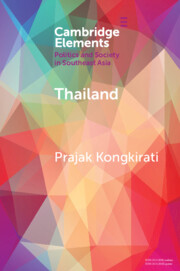Element contents
Thailand
Published online by Cambridge University Press: 23 April 2024
Summary
- Type
- Element
- Information
- Online ISBN: 9781108565677Publisher: Cambridge University PressPrint publication: 30 May 2024
References
Primary Sources
Secondary Sources
- 6
- Cited by

